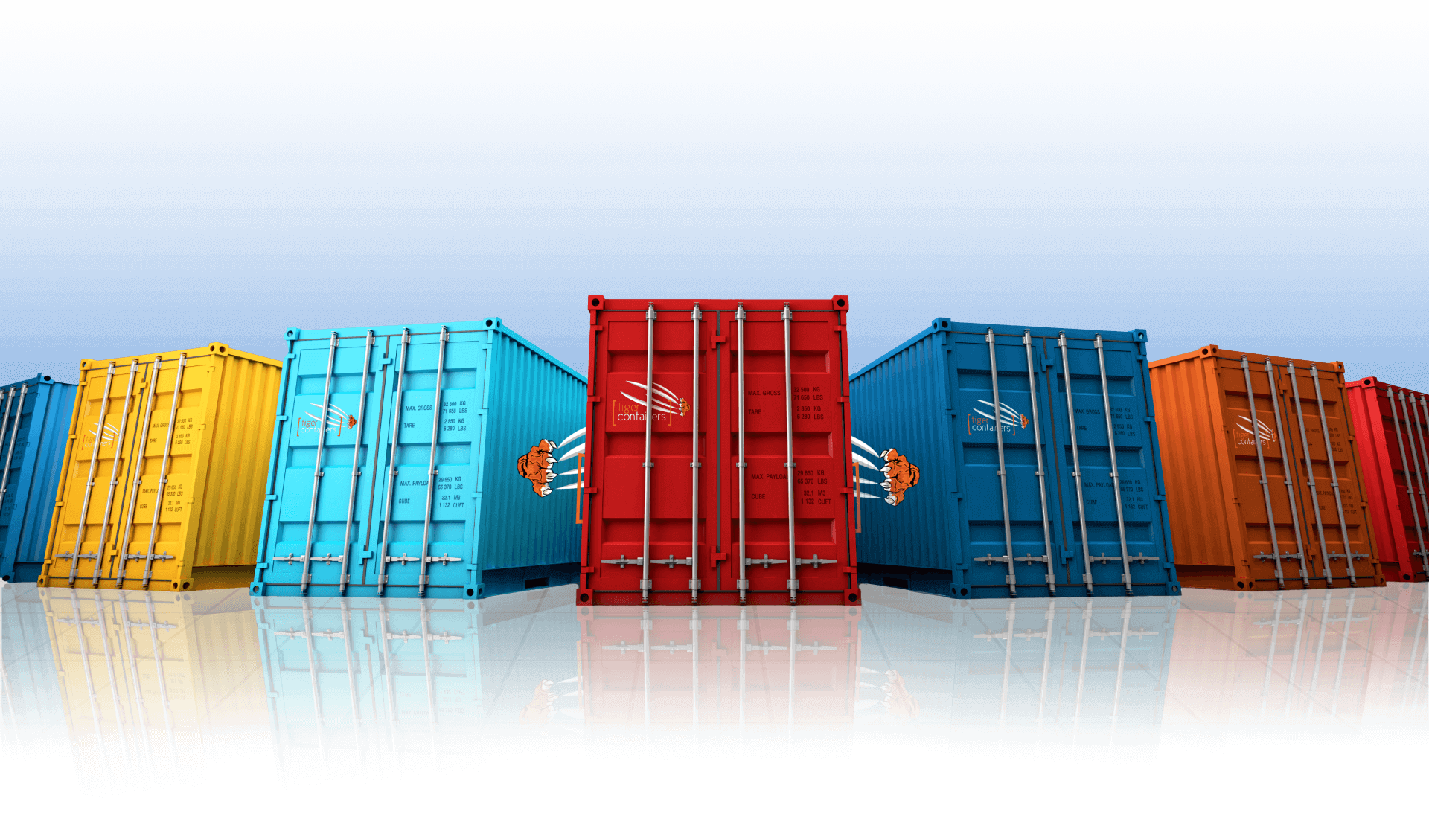In this post, we’ll take a look at some of the more common repairs done to shipping containers and how damage can occur during the life of a container.
When you visualise a shipping container, you see a very solid metal box that basically looks indestructible. While cargo containers are super tough, they are subject to a lot of knocks and wear and tear. They are not impervious to damage and do require repairs from time to time.
SHIPPING CONTAINERS CAN RUST
Older containers can be prone to rusting as they take a few knocks and lose some of their protective paintwork. They are made of steel after all. Even though brand new containers are very well protected due to their nice shiny new coats of paint, over time they start to lose some of this protection.
Just one small dent from a forklift tyne or any other cause and some of that paint will be chipped away. Once rust starts to develop it can actually grow beneath the paintwork. All it needs is a starting point.
Aside from encountering damage in transit, there are sections of a shipping container that are more prone to rusting. These are:
- The welds
- Seams
- Bottom parts of the doors
- Container sides near the ground
- Any damaged sections
Flaking paint on older containers that have spent years exposed to the sea and sun will readily develop rust patches. Generally, this is just surface rust. Both the rust and flaking paint is best removed with sandblasting. Then the container can be primed and repainted.
Deep rust and holes will actually need to be cut out. Generally, a new piece of steel is welded into the container to patch the hole. Another method of patching is using a fibreglass reinforced polyester patch. After exposure to UV light, the patch hardens like metal.
To ensure a rust-free shipping container, regular inspection and touching up of the paintwork will help.
DAMAGED OR ROTTING SHIPPING CONTAINER FLOORING
The flooring of shipping containers is made from one-inch-thick marine grade plywood. It’s very durable and made to last but even this quality marine timber will suffer from wear and tear. The floors of shipping containers endure far more punishment than practically any other part of the container. After all, it’s the floor that sees all the foot traffic, machinery traffic, and withstands the load contained within.
There’s lots of gouging and scraping, pressure, weight and more placed on the container floor. Over time the floor may suffer damage, and this could also come in the form of water damage if the container is not sealing properly and is therefore not watertight.
The good news is that it’s not that hard to replace the flooring, nor is it mega expensive. Replacing the floor will have the interior of the shipping container looking like new again.
If the floor rotted due to water damage, it’s important to check the seals on the container doors, as well as search for any other possible source of water leaks; whether it be rainwater or seawater. Without patching these leaks, the floor will eventually suffer the same fate again.
REPLACING THE DOOR SEALS
 If you are transporting or storing goods in a shipping container, then ideally you want it to be both airtight and watertight. Not only does this protect the contents from the elements, it also keeps out dirt, dust and vermin.
If you are transporting or storing goods in a shipping container, then ideally you want it to be both airtight and watertight. Not only does this protect the contents from the elements, it also keeps out dirt, dust and vermin.
While the rest of the container might be in perfect condition, if the rubber seals for the doors are old and worn and not sealing efficiently, the container is compromised.
Replacing the rubber seals is a task that can be done quickly and easily by a professional and it won’t cost a lot. In fact, it’s one of the most important repairs you can carry out on a shipping container.
Another key thing to check apart from the seals is the doors themselves. If they’ve taken a few knocks and have a few dents in them, they could be slightly warped, making it impossible for them to seal the entrance to the container, new seals or not.
Warped doors will either need to be repaired or even replaced with a new or a good quality second-hand set of doors.
Another thing that can happen with old doors is they become very stiff. Removing the old grease from the hinges and applying fresh grease usually resolves this problem.
SHIPPING CONTAINER REPAINTS
Not only is a freshly painted used container aesthetically appealing, once any repairs have been done – rust removal, patching holes, sandblasting away flaking paint – that new coat of paint will add a much-needed layer of protection to the container.
Don’t just stop at painting the outside either. Internally the container takes a lot of knocks too, dents and scrapes where rust can take hold, so it’s always wise to give the interior a fresh paint job as well.
Another reason for a repaint might be to cover up previous company branding on the container. Once it’s been repainted, you can then add your own branding to the walls and doors.
REFRIGERATED CONTAINER REPAIRS
So far these common repairs are ones that can apply to standard shipping containers as well as the walls, ceiling and floors of a refrigerated (or reefer) container. When it comes to a reefer container though, obviously there is a refrigeration unit that can suffer problems.
Any issues with refrigeration will need to be looked at by a trained professional, as generally, they are not a DIY project.
The container will need to be well sealed at all times, so it’s vital that those door seals and any rust spots are sorted out. This will also help with energy efficiency and keep running costs down.
If the container simply isn’t cooling as it should, your refrigeration mechanic will take a look at it, and either recommends repairs or possible replacement of the unit.
THE TAKEAWAY
The best form of repair is preventative maintenance. Regular inspections and touch-ups will help prevent a small issue from becoming a major drama. It’s not hard to look after a shipping container. It’s just a matter of being diligent and not ignoring any problems.
A well looked after shipping container will give you good service for decades.





























